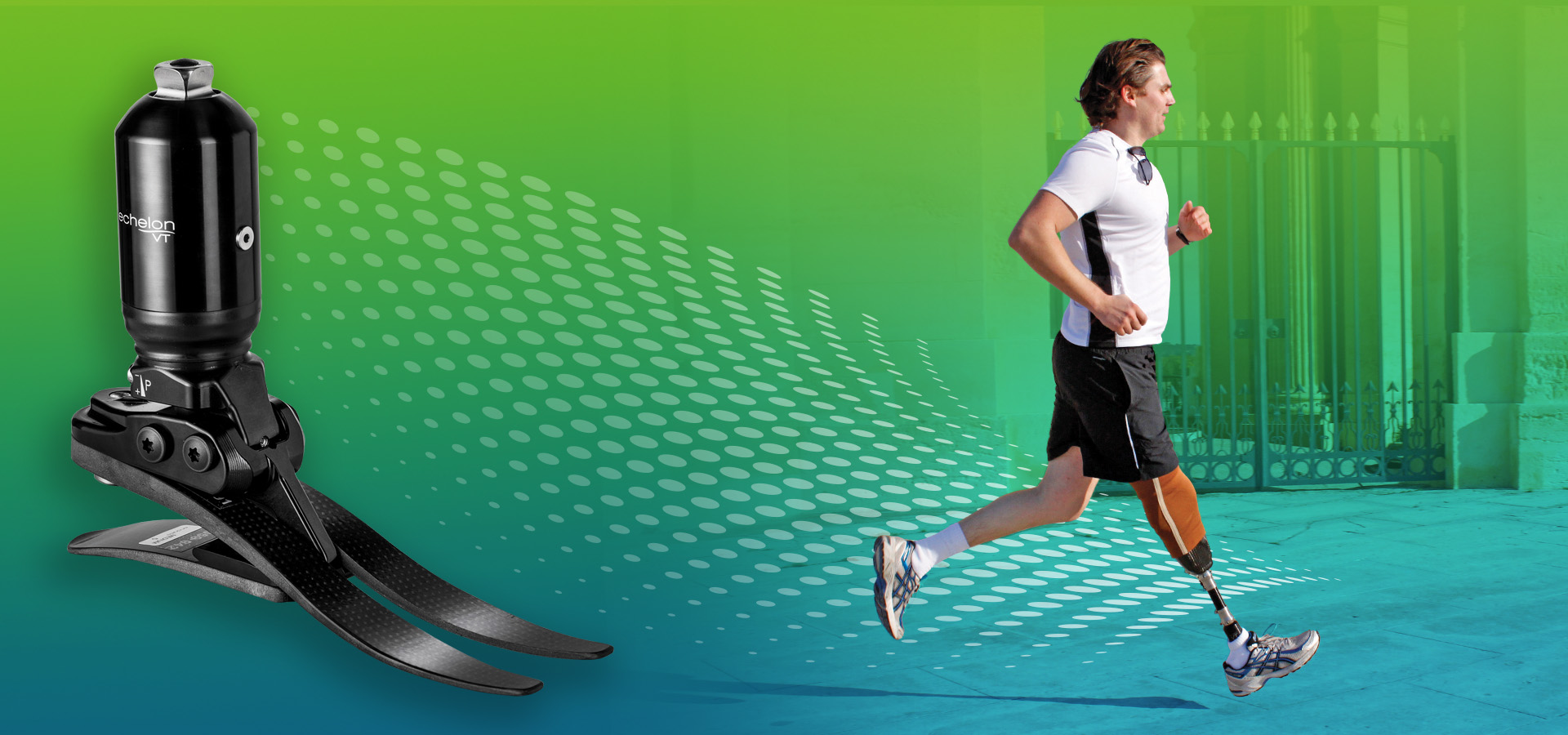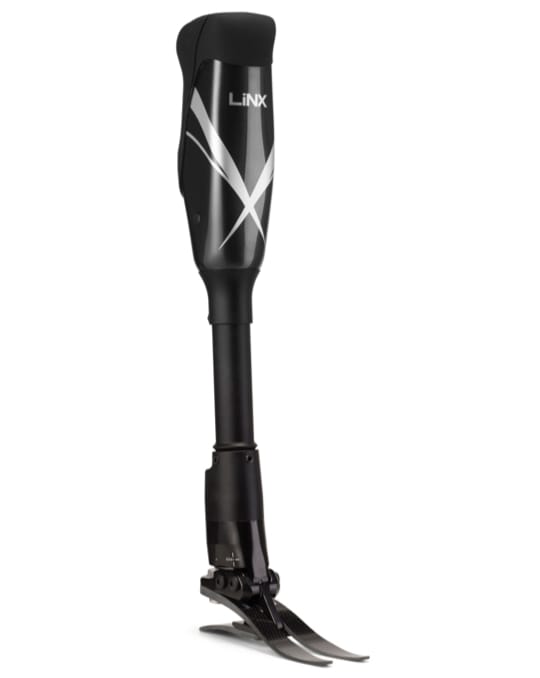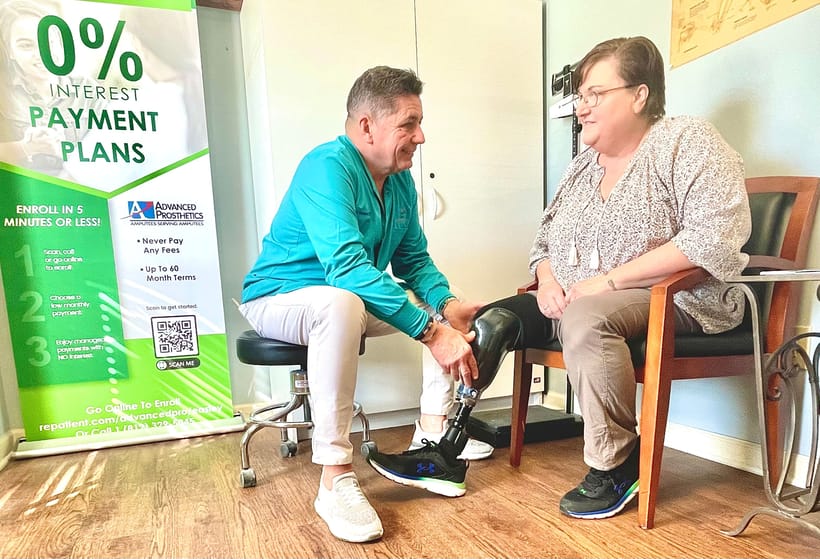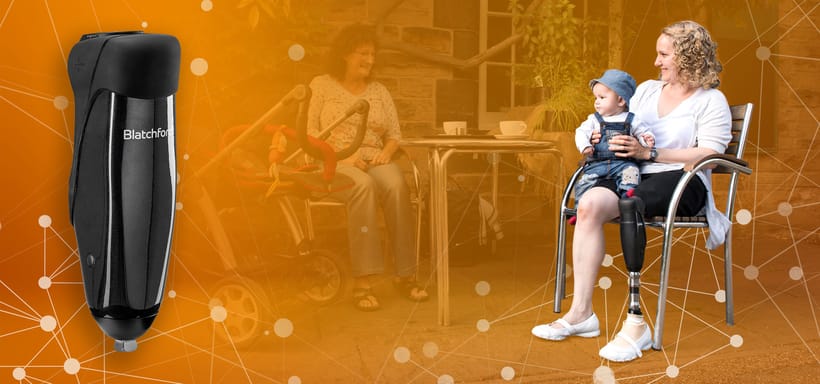Take a Load off Your Foot: Echelon VT
Posted on Monday, May 15, 2023

“Lead foot” is a term often used to describe one whose foot is heavy on the gas pedal when driving. It can also describe how a prosthetic foot can feel if it’s improperly fitted or simply not the best choice for the wearer. A foot that feels heavy and doesn’t allow much movement or flexibility can deplete your energy and limit your activity level, standing in the way of your recreational goals.
Prosthetic foot designs have come a long way since the SACH (solid ankle-cushion heel) design developed in the 1950’s. Single- and multi-axial models have largely been replaced by energy storing foot designs that capture and retain the wearer’s energy from one step and release it into the next step—so it takes less effort and is thus less fatiguing to walk the same distance. That extra ‘leftover’ energy can allow amputees to participate in activities and sports that require running and jumping, as well as vigorous walking.
Hydraulic technology takes the energy-storing principle one giant step further, adding to the prosthetic foot a hydraulic cylinder that encloses a piston controlled by fluid that cushions and modulates the foot’s speed and motion. The hydraulic method of storing and releasing energy works in partnership with the human body it serves, by stimulating the behaviour of muscles to further enhance performance.

Does the hydraulic unit add weight to the foot? “Not so you’d notice!” some happy wearers agree: Like a baseball bat that rests on your shoulder, or a muscle car at a stoplight, that “dead” weight is deceptive. Once launched into action, they seem to perform weightlessly. In motion, with balance, momentum and physics all aligned in its camp, the EchelonVT also surprises and delights wearers with its capabilities:
One of the greatest benefits of a hydraulic ankle is its ability to adjust and balance pressure within the prosthetic socket so that it fits more comfortably and avoids painful friction and hot spots—and doesn’t feel like a ‘heavy’ foot.
Echelon VT’s Biomimetic hydraulic technology also mimics the dynamic and adaptive qualities of muscle actuation to encourage more natural gait; its mimicry of other human physiology includes the articulating ankle, with its flexible joints and ability to rotate or twist, and the stable—yet flexible—arch of its mid-foot, which makes adapting to uneven terrain as natural as the action of a biological foot.
Even better, weekend athletes will appreciate Echelon VT’s vertical shock absorption capabilities: wearers can also tread lightly and spring smoothly out of their golf carts, then pivot in approved fashion—from tee off to follow through.
“Echelon VT’s smooth, natural movement feels great—and much more like a human foot than anything else I’ve tried before,” notes one user, a European Sprint Champion and World Championship Silver Medallist.
In all, its cumulative assets add up to enhanced proprioception—which helps the prosthesis to feel more like an extension of the leg, promoting a more natural, and thus a more comfortable and safer gait. This sense of security fills wearers with confidence and allows them to walk longer and more comfortably, without making frequent adjustments to their prosthesis.
Research bears out the expectation that hydraulic ankle use should provide meaningful benefits to the user’s everyday walking by improving energy efficiency, and can be especially beneficial to those who can walk at different speeds and over different gradients.
Independent comparison studies have further shown that Echelon VT delivers greater comfort, a smoother, easier and more natural gait, and improved safety, with less risk of trips and falls. High scores in user satisfaction have also been recorded.
For amputees eager to return to their favourite recreational sports such as golf or hiking, caution would dictate a warning that every case is different; and, as in any life endeavour, each amputee regains abilities at a different pace and achieves a different level of skill. But, generally speaking, the success rate for below-knee (BK) amputees who return to an active lifestyle—including recreational sports such as golf—is high. There are several national and regional Amputee Golfers Associations to help you get started—or back in the game.
There are also a number of websites that offer hacks and primers for amputee hikers; and special interest groups for other amputee sports and recreational activities may be easily located with guidance from your prosthetist, the Amputee Coalition or similar groups.
In the United States there is a growing population of senior citizens who, due to their age, are more vulnerable to diseases and conditions resulting in amputation. Consequently, there is also an increased demand for better technology—from more amputees who are eager to maintain a more active lifestyle than has ever been possible before. Blatchford’s 130-year commitment to providing the best possible prosthetic solution to support them in pursuit of their goals has positioned us as industry leaders in responding to this demand with a variety of choices suited to the specific activity-level needs and goals of each patient.
Your doctor and prosthetist can work together with you in determining the most suitable of many available prosthetic solutions to prepare you for achieving your goals—at home, at work, and on the golf course. And Blatchford is committed to collaborating closely with them in providing those superior solutions.
More articles
-

Be All You Can Be: Linx Limb System
LINX PROSTHETICS MICROPROCESSORS MPK LIMB SYSTEMPosted on Friday, April 12, 2024 , in Prosthetics
-

Blatchford Access (powered by Repatient) is designed to help people pay for the prosthetic care they need.
BLATCHFORD ACCESS PROSTHETICS REPATIENTPosted on Friday, April 12, 2024 , in Prosthetics
-

Better Together: Orion 3 Microprocessor Knee
ORION3 MPK MICROPROCESSORS LLLDAM LIMB LOSS LIMB DIFFERENCEPosted on Friday, April 12, 2024 , in Prosthetics